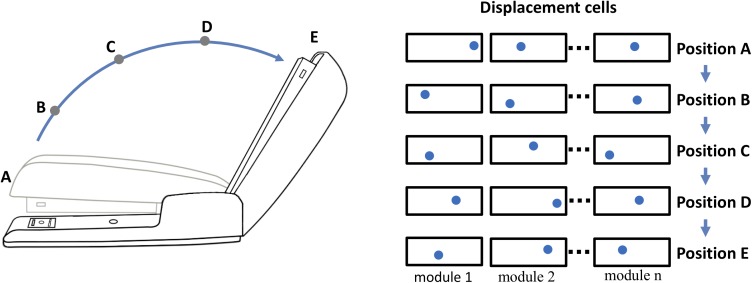FIGURE 4.
Representing behaviors of objects. Objects have “behaviors,” they can change their shape and features over time. The neocortex can learn these changes, but how? For example, a stapler has several behaviors, one is rotating the top relative to the base. If the top of the stapler is a component object of the stapler, with its own location space, then its position relative to the stapler base is represented by a displacement vector as illustrated in Figure 3. (The top and base of the stapler are analogous to the logo and the cup. Unlike the logo on the cup, the location of the stapler top relative to the base can change.) The closed position is represented by displacement A and the fully open position is represented by displacement E. As the stapler top hinges from the closed to open position, the displacement vector will continually change. (Five positions, A to E, and corresponding displacement vectors are shown.) To learn this behavior, the neocortex only needs to learn the sequence of displacement vectors as the top rotates.

